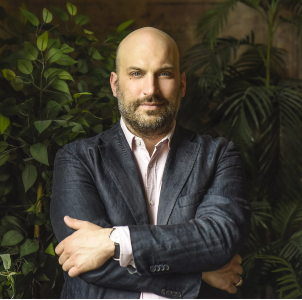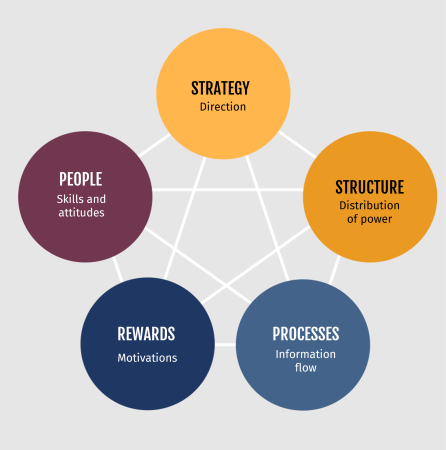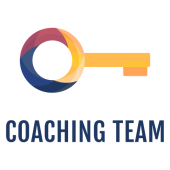ORGANISATIONAL DEVELOPMENT
Personalised support in organic steps to help your organisation grow safely
IN WHAT ORGANISATIONAL CHALLENGE ARE YOU LOOKING FOR HELP?
GROWTH
Is the organisation growing rapidly and is it challenging to keep up with the changes?
NEW ORGANISATIONAL CAPACITY
Is a new organisational capacity needed?
ORGANISATIONAL TRANSFORMATION
Do new challenges require a new structure? How do we move from the current state to the desired new functionality?
ACQUISITION OR MERGER
Integrating two organisations is a big challenge. One of the dangers is that the values that made the acquisition attractive may dissolve when cultures meet. Our experts can help you consciously integrate the valuable parts of the companies and cultures and let go of what is no longer useful.
ORGANISATIONAL LOSS OR TRAUMA
Has an important project fallen through? Has a leader left? Has part of the team been involved in an accident? Has the organisation suffered some other loss or setback? How do we deal with such and similar cases and integrate the lessons learned?
ORGANISATIONAL LOSS OR TRAUMA
How do we effectively manage internal organisational knowledge assets? What type of knowledge is present and how can it be transferred, captured, replaced, expanded or developed?
CULTURAL MANAGEMENT
What has helped you so far is now hindering you? Find out how we can help your organisation find its way through the new challenges!
ORGANISATIONAL CHALLENGES
EFFECTIVE GROWTH MANAGEMENT ADVICE
Growth challenges? We support successful transformation
1.
Scaling processes
As a company grows, certain processes may not work at a larger scale. Instead of simply copying, we break processes down into their elements and apply new combinations to scale effectively. In this way, we can also discover missing features for which we can create solutions.
2.
Developing new processes
During growth, organically structured work phases need to be formalised to work effectively with multiple participants. New processes are created and integrated with existing systems. Solutions are often found step by step, through focused experimentation.
3.
Stabilising and maintaining an organisational culture
In a period of intense growth, many new employees and managers join the organisation, bringing new cultural elements with them. Maintaining the existing culture and integrating new elements is crucial. In slower growth this happens organically, but in dynamic growth this process needs to be managed consciously.
4.
Shaping organisational culture
As growth takes place, the organisational culture must also change. A young, dynamically growing organisation has different needs than a stable, larger company. In such cases, the culture is also adapted to the changed requirements.
WHY CHOOSE US?
Tools tailored to the dynamics of complex systems:
The Adizes model and tools based on Complex System Dynamics, such as Sensemaking or Estuarine mapping, help us to effectively address growth challenges.
Experienced consultants:
Our experts have lived through several intense growth cycles as managers in different organisations, so they can support our clients with their own experience.
Contact us so that we can shape the future of a successful organisation together!

BUILDING NEW ORGANISATIONAL CAPACITY
Growing business, new challenges? We can help!
1.
Needs for innovation
If your business has been doing well but now it needs innovation but lacks the capacity, we’re the solution.
2.
Multiple sites for production expansion
We build an organisational unit that coordinates production across different sites, ensuring efficiency.
3.
Mutual understanding and cooperation
We integrate the knowledge and experience of each department to create a common and deeper level of understanding.
WHY CHOOSE US?
Extensive experience:
Our consultants not only have methodological knowledge, but also their own management and consulting experience in managing similar processes.
Tailored solutions:
We listen and respond to changing needs, building the new organisational unit step by step.
Continuous monitoring:
We regularly monitor the impact of the new unit’s work on the rest of the organisation, particularly on the departments directly concerned.
Contact us to help you shape the future effectively!

ORGANISATIONAL RESTRUCTURING
What can motivate the transformation of organisations?
1.
Increasing efficiency
We want to improve and optimise existing operations.
2.
Changes in external circumstances
We adapt operations to changing market needs.
3.
Change of leadership
We want to implement a new way of working in a part of the organisation.
4.
Growth
Support business recovery.
5.
Market contraction
Achieving survival and sustainability even through downsizing and restructuring.
WHAT CAN WE HELP YOU WITH?
In each case, it is important to consider where the organisation is now and what next steps are available. Many development processes fail because they set a vision and try to achieve it in one step, regardless of whether it is possible from the current state of the organisation. We believe that every step towards the goal brings benefits and success. And that it is more important to get there than to achieve it in one step.
Our methods:
We use a broad portfolio of methodologies to support our clients to safely reach their goals.
Results:
- Successes and beneficial changes at every step
- Achieving realistic goals
- Safe transformation
Contact us to help you effectively shape your future!

ACQUISITION AND MERGER MANAGEMENT
Why is it a particularly sensitive situation?
In the event of an acquisition or merger, the values, resources, knowledge base and culture of organisations can be at risk. The loss of identity and culture can result in a loss of expected value.
HOW CAN WE HELP?
1.
Conscious management
Although culture cannot be completely controlled, we can create and facilitate the conditions for its development, so that valuable elements are brought to the front.
2.
Conscious management
Although culture cannot be completely controlled, we can create and facilitate the conditions for its development, so that valuable elements are brought to the front.
3.
Intervention in time
Based on the results, managers can intervene effectively and in an informed manner when necessary.
RESULTS
Preserving value
Preserving valuable organisational elements and successfully creating a new culture.
A secure process
Ensuring a safer and more predictable transition process
Contact us to help you successfully acquire or merge your organisation!

MANAGING ORGANISATIONAL LOSSES

- Has an important leader or key person left?
- Has an important project failed?
- Has the company changed due to dynamic growth?
- Impact of a toxic leader or colleague?
- Accident to a colleague or several people?
- Perhaps someone has died in the company?
Such situations can be experienced as a loss by employees. It is important to process these experiences and deal with their effects, because successfully processed experiences deepen the sense of belonging and commitment. Losses that are hidden, on the other hand, undermine cooperation and commitment, which has a negative impact on performance and employer branding.
1.
Grief and loss management
2.
Solution-focused coaching
3.
Gestalt approach
RESULTS
- Increasing cohesion and commitment
- Improving performance
- Positive employer branding
Contact us to help your organisation deal with loss effectively!


WHY IS KNOWLEDGE MANAGEMENT IMPORTANT?
One of an organisation’s most important assets is its own knowledge. But managing it is often a challenge:
- How to transfer it to newcomers?
- How do we ensure that we are not at the mercy of a few key people?
- How to create internal supply and scale knowledge?
1.
ASHEN framework
This framework is used to map the knowledge elements of an organisation:
- Documentable processes and practices
- Trainable skills and hiring screening
- Rules of thumb to help you navigate where there are no processes (yet)
- Required experience and talent
2.
Documentation and trainings
Develop the documentation practice and create internal trainings on specific skills of the organisation.
3.
Knowledge transfer
We will develop methods to effectively transfer internal experience and culture within the organisation.
RESULTS
Scalability
We can see better what knowledge elements can cover each job and how we can bring them together in a team.
Internal supply
We make the knowledge elements that a new manager needs more tangible. We help you to develop a system to transfer these effectively.
Recruitment
We get a more accurate picture of what jobs are best for candidates with which skills, experience, or perhaps talent or attitude.
Contact us to help you manage your organisation’s knowledge management!


CULTURE CHANGE
Why are we changing culture?
1.
To increase efficiency
To improve the functioning of the organisation and increase performance.
2.
To support a strategic change of direction
To facilitate the introduction of new strategies.
3.
Facilitating leadership change
Supporting new leaders by adapting the culture to the new leadership style.
4.
Encouraging innovation
Creating a more open and creative working environment.
5.
Improving morale and engagement
Increasing employee satisfaction and engagement.
6.
Adapting to market changes
Responding to changes in the external environment.
HOW DO WE SUPPORT ORGANISATIONS IN CULTURE CHANGE?
1.
Diagnosis
Mapping and understanding the current organisational culture.
2.
Developing a vision for the future
Defining the new desired culture.
- What is the ideal culture we are striving for?
- What elements of this already exist in the organisation?
- What is the next achievable step for the organisation towards the desired culture based on the current state?
3.
Strategic planning and communication
Initiating the change process and communicating key objectives to the organisation.
4.
Parallel Micro Projects
Based on a detailed organizational culture map, different interventions in different parts of the organization under the guidance of the respective leaders. Tailored, tangible processes.
5.
Training and development
If necessary, these are complemented by training and development of employees to support the new culture.
6.
Monitoring and evaluation
The process is continuously monitored and results are regularly evaluated with the responsible managers. If necessary, we help them to refine interventions on the basis of these results or even formulate and launch new interventions with them.
TOOLS AND METHODS
The most important tools for culture change are:
- Mapping the appearance of the organisational culture using Sensemaking tools
- Mapping intervention points with Estuarine Mapping
- Monitoring the process with Sensemaking tools and software
- Complementary processes:
- Workshops and trainings
- Mentoring and coaching
- Leadership by example
- Communication campaigns
- Transforming recognition and reward systems – using the Organisational Design toolkit
Culture change is a complex and time-consuming task that requires profound changes at all levels of the organisation. For its successful implementation, the commitment and active involvement of management is essential. For culture change in particular, it is true that any intervention can have unexpected side effects. Some of these may be harmful, some may be unexpectedly beneficial. It is important to always move the organisation to the next available state and manage the side effects that occur. Sensemaking and Estuarine Mapping support us in this. As well as the development levels of the Adizes model and their challenges to help us navigate through the process.
Contact us to help you with culture change within your organisation!


STATEMENT
VATTAY DÁNIEL
Executive, business, life and team coach, Agile Product Management Expert and Coach, Gestalt Therapist, Trainer
OUR METHODOLOGY

WHY DO YOU NEED US?
Today’s world can be described by the terms VUCA (volatile, uncertain, complex, ambiguous) and BANI (“brittle, anxious, non-linear, inconsistent”). These show that previously predictable areas are now complex, requiring a new approach.
As long as we approach these challenges in the usual way, we inevitably encounter difficulties and frustrations as we try to influence the system in ways that are different from what is adequate and functional.
To do this, we first need to recognise whether we still need to intervene within a well-ordered, predictable framework, or whether we have stepped out into the world of complex system dynamics, where we do not know exactly all the determinant components and relationships that would allow us to predict outcomes. So we can move forward with other methods in small, secure steps, through deliberate experimentation.
1.
System dynamics survey
We examine the degree of order or complexity in the functioning of the organisation or department. This will determine the appropriate development strategy. In the case of an organisation in crisis, we propose an immediate stabilisation of the system so that development can then proceed safely.
2.
Small, achievable steps
We move forward in small steps to detect and correct unpleasant side effects in time. We also support positive, unexpected effects.
3.
Activating organisational knowledge
The members of the organisation know their own functioning best. We help make this knowledge visible and put it to use.
4.
Tailored processes
In the first step, we assess the baseline and the goal, then together we design the interventions and monitor the results. In each case, we support the managers to identify and implement the right actions for their own departments.
5.
Continuous feedback and guidance
After each step, we evaluate the reactions, learn from them and adjust the process if necessary. We make suggestions for skills development or process improvements, involving competent partners.

What can you expect?
1.
METHODS BASED ON THE DYNAMICS OF COMPLEX ADAPTIVE SYSTEMS
- Cynefin framework
- Estuarine mapping
- Sensemaking
- Single culture or knowledge assessment
- Process monitoring

2.
ADIZES ORGANISATIONAL LIFE CYCLE MODEL
3.
ORGANISATIONAL DESIGN
4.
DEALING WITH ORGANISATIONAL LOSS OR TRAUMA
5.
KNOWLEDGE MANAGEMENT
ASHEN framework

1.
Cynefin
The Cynefin decision support framework is used to support management in determining the type of intervention that will best achieve their defined objectives. Here, we recommend different intervention strategies depending on the nature of the dynamics of the activity or system.
2.
Estuarine Mapping
Estuarine mapping is based on the analogy of an estuary in a delta. In a delta estuary, water flows upstream at high tide and downstream at low tide. Large granite boulders can be examined every 10 years, while small sandbanks can change several times a day. This back and forth fluctuation can also be observed in a changing organisation. This method allows us to map in great detail the defining points of an organisation’s culture and function, and to determine which ones are changing and how much energy is required to shape them. Knowing these, we can intervene with several small projects at once to support the organisation’s progress. This allows each to proceed safely in small steps, and to correct any of them in case of unexpected side effects. However, because of the parallelism, the transformation can still proceed quickly.
3.
Sensemaking
Sensemaking is all about involving the members of the organisation, the employees, to share what they see about the state of the organisation, its processes, its daily life and to interpret it for us. These are then displayed on a common graph to reveal the main narratives and perceptions of the organisation. In this way, it is not the consultant who interprets what the members of the organisation are saying on the basis of interviews or other surveys, but the members of the organisation themselves who do this in a common system. This gives a clearer picture and filters out possible misunderstandings and distortions by external consultants. Our consultants will help you create the questions for the survey and support your leaders to make decisions about the direction they want to take the organisation, based on the patterns that become visible. So we can move forward in small steps, always taking the next best available step.
4.
A one-off culture survey
The tool can be used as a one-off tool to assess the culture or knowledge base of an organisation.
5.
A one-off culture survey
The tool can be used as a one-off tool to assess the culture or knowledge base of an organisation.
ADIZES ORGANISATIONAL LIFE CYCLE MODEL
This model compares the stages of organisational development to the stages of individual development. For each, it identifies the key challenges and changes to be addressed, as well as the obstacles associated with each stage. This model helps to see the challenges as elements of an organic development and also provides a way forward in terms of the direction of the necessary changes.


ORGANISATIONAL DESIGN
The Organisational Design methodology approaches the organisation from 5 different aspects. People i.e. skills and attitudes, Rewards i.e. motivation, Processes i.e. information flow, Structure i.e. distribution of power and Strategy i.e. direction. Galbraith’s star model illustrates the interaction of these. Organisational Design helps us to understand how to support the organisation from these perspectives.
DEALING WITH ORGANISATIONAL LOSS OR TRAUMA
Sometimes an event happens in the life of an organisation that affects many. A major accident that may affect several people, the loss of an important client or project resulting in layoffs or downsizing, or the departure or death of a manager or a key colleague. These events can affect, or even upset staff both individually and collectively. If the effects of these events are not dealt with, there is often a demonstrable drop in performance. When processed, there is often a demonstrable and tangible improvement in motivation and an increase in commitment. The traumatic events that an organisation goes through together can weaken or strengthen it, depending on how we deal with them.
We support the processing of these using both Gestalt methods and a Solution Focused approach, as well as methods developed by our staff based on the grief and loss processing method, building on both Gestalt and a Solution Focused approach.


KNOWLEDGE MANAGEMENT
One of the most important assets of any organisation is its organisational knowledge. But it is also what often makes growth and sustainable operation difficult. How do we transfer the experience we have gathered over a decade to a newcomer? How do we filter for someone who fits our organisational culture? How do we reorganise an area when there is XY who has all the knowledge needed to run it in one person?
Often we have difficulty with these questions because we are dealing with knowledge in a unitary way, which could be broken down in more detail. There are processes and lists that we can easily document. There are skills that we can train. There are skills that we’ve developed that are specific to our organisation but we don’t know how to train them. There are experiences that we feel we’re not going to deliver in training or in writing, but we don’t know how. There are times when someone has taken one area as a person so far, they’ve had too much of a workload, but we don’t know how to get another one. (The good news is that we don’t have to.)
In these situations, our experts can help you break down the knowledge base into manageable units. They identify the means by which they can be passed on, and help you develop ways to pass them on that fit your organisation. And in this way we can effectively support scaling, generational change or other transformations.

Contacts:
Headquarters: 1027 Budapest, Jurányi Street 10, 1/5
Billing address: 1027 Budapest, Jurányi Street 10, 1/5
Central phone number: +36-1-614-1184
